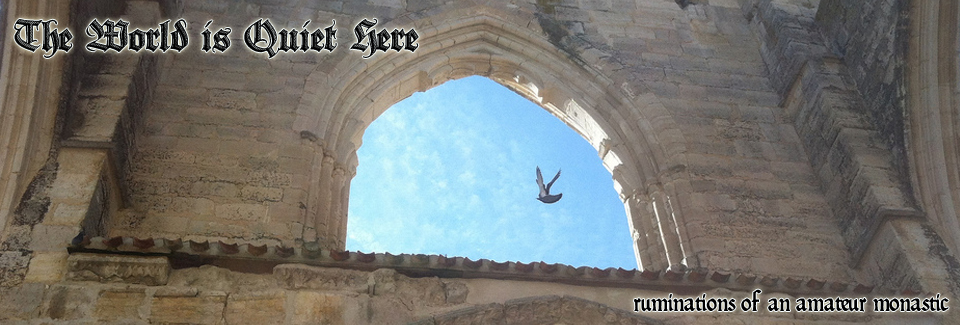Seven Sorrows
| Stabat Mater dolorosa Iuxta crucem lacrimosa Dum pendebat Filius Cuius animam gementem |
At the cross her station keeping, stood the mournful mother weeping, close to Jesus to the last Through her heart, his sorrow sharing, |
 It was this morning’s hymn for the Divine Office, for today is the feast of Our Lady of Sorrows. This is an ancient title for the Blessed Virgin Mary, based on Simeon’s prophecy to Mary from Luke’s Gospel.
It was this morning’s hymn for the Divine Office, for today is the feast of Our Lady of Sorrows. This is an ancient title for the Blessed Virgin Mary, based on Simeon’s prophecy to Mary from Luke’s Gospel.
Simeon blessed them and said to Mary his mother, “Behold, this child is destined for the fall and rise of many in Israel, and to be a sign that will be contradicted, and you yourself a sword will pierce so that the thoughts of many hearts may be revealed.”
(The Gospel According to Saint Luke, Chapter 2 verses 34 and 35)
As Mary stood at the foot of the Cross, the sword of sorrow that Simeon had foretold pierced her soul. Traditionally, this feast is known as the feast of the Seven Sorrows:
- The prophecy of Simeon (Luke 2:22-35)
- The flight into Egypt (Matthew 2:13-21)
- Loss of the Child Jesus for three days (Luke 2:41-50)
- Mary meets Jesus on his way to Calvary (Luke 23:27-31; John 19:17)
- The Crucifixion and Death of Jesus (John 19:25-30)
- Mary receives the dead body of her son (John 19:31-34, 38; c.f. Lamentations 1:12)
- Jesus is laid in the tomb (Matthew 27:59; Mark 15:46; Luke 27:55-56; John 19:38-42; c.f. Isaiah 53:8)
Sorrow is a normal part of the human condition, and I for one am deeply suspicious of those chirpy souls who claim to be happy all the time. The world is more complicated than that.
Even the Virgin, who knew her son was God and must triumph over death, was overcome with sadness at times. We all are. It’s as legitimate an emotion as any other. We shouldn’t try to supress it, but rather to live through it with hope in the goodness and mercy of God. We can stand with Mary and the foot of the Cross, where our sorrows too can be united with Christ’s passion.
Some days, that’s not all that easy.
Let us adore Christ, the Savior of the world, who called his mother to share in his passion. (invitatory antiphon, Feast of Our Lady of Sorrows)

September 15th: Our Lady of Sorrows. The tortures that wracked the sacred members of Christ’s body were all collected in Mary’s heart –St Jerome